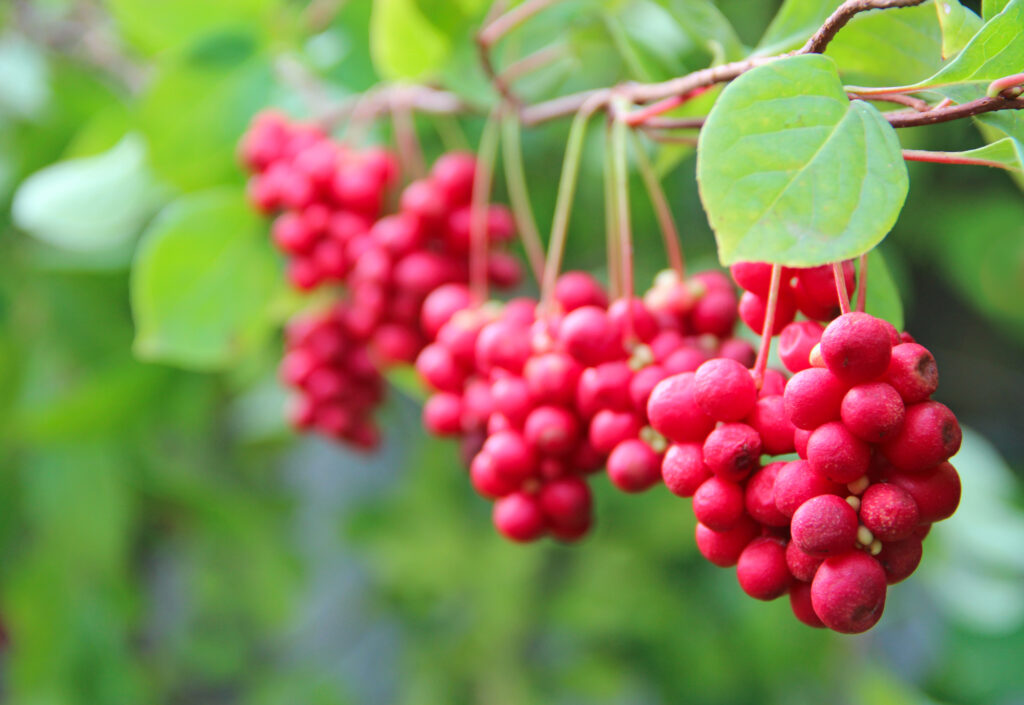Colon cancer is one of the most common cancers in the United States, with more than 100,000 new cases diagnosed each year. It’s also the third leading cause of cancer-related death in men, and the fourth-leading cause in women, contributing to more than 50,000 deaths each year.
While treatments have improved over the past few decades—and outcomes have generally improved thanks in large part to early detection—death rates among people under age 55 have actually been increasing by 1% a year since the mid-2000s. Even when successful, conventional therapies often have significant side effects, including organ toxicity, which lead to a lower quality of life for patients.
“Because of this, there is an urgent need to develop new approaches to cancer treatment that could lead to improved clinical outcomes,” Murphy Wan, PhD, of the University of Portsmouth in England. To that end, Wan and a team of researchers set out to investigate the anti-cancer potential of schisandrin B (Sch B), a natural polyphenol found in the fruit of the Schisandra chinensis plant (five-flavor berry), which is native to Asia. The results of their study were published in the journal ACS Pharmacology and Translational Science.
The Study
Previous research has shown Sch B has anti-cancer properties in liver, breast, ovarian, gastric, and gall bladder cancers. But until now, the mechanism underlying the anti-tumorigenic effect of Sch B in colon cancer has not been fully understood. To address that knowledge gap, Wan and her team first performed a comprehensive analysis of the anti-tumor effects of Sch B on human colon cancer cells in vitro using a combination of Raman spectroscopy, RNA-seq, computational docking, and molecular biological experiments.
Their results showed that Sch B inhibited colon cancer cell growth and promoted colon cancer apoptosis (cell death) while showing very low toxicity against normal cells as compared to conventional anti-cancer drugs. Further investigation revealed that Sch B treatment triggered apoptosis in the colon cancer cells through the activation of the ER stress pathway, giving the researchers an idea as to the mechanism behind its effects.
With these results in hand, the researchers then set out to test Sch B’s anti-tumor effect in vivo, using mice that had been implanted with human colon cancer. One group of mice was treated with 50 mg/kg body weight of Sch B every other day for one week, while a second group was treated with the chemotherapy drug 5-Fluorouracil, and a third group received a placebo.
The results showed that tumor volume and tumor weight were significantly reduced in Sch B-treated mice compared to placebo, while the body weight remained unchanged between the Sch B- and placebo-treated groups. The Sch B group also didn’t experience diarrhea, a common chemotherapy side effect that was seen in the 5-Fluorouracil group. Tumor necrosis was observed in both Sch B- and 5-Fluorouracil-treated tumor tissues.
Conclusions
“Our data have discovered an entirely new approach that offers a safe and cost-effective alternative to human colon cancer treatment,” the researchers wrote in their conclusion. “Furthermore, this study is the first to provide a comprehensive understanding of the molecular mechanism underlying the antitumorigenic effect of Sch B on colon cancer through a combination of Raman spectroscopy, RNA-seq, computational docking, and molecular biological experiments.”
“By unraveling the molecular mechanism underlying its anti-tumorigenic effect, we have laid the foundation for further exploration of the compound as a potential treatment option,” said study co-author Hani El-Nezami, PhD, of the University of Eastern Finland. The team recommends that Sch B should be further explored as a novel and more specific approach to colon cancer therapy.






